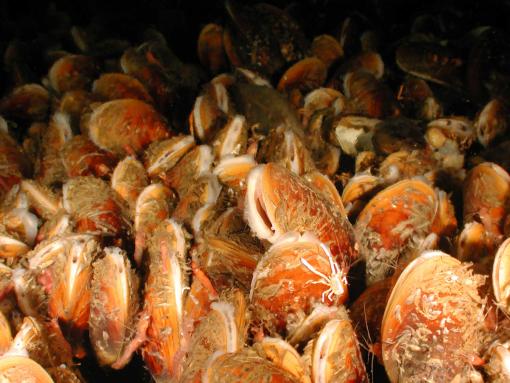Brine Pool Dive: An Overview

By Nicole Dubilier and Chuck Fisher
Chief Scientists, New America Expedition
During the third dive of our “New America” expedition leg, we will be diving on a brine pool 650 meters (2,135 feet) deep in the Gulf of Mexico to collect samples of mussels that live along the edge of the pool.
A brine pool is essentially a lake, underwater. The water in the brine pool is being filtered through salt sediments, and the water is so salty that it can’t mix with the seawater around it, and therefore creates its own body of water with a distinct surface. You can land on it, make waves on it, and plunge into its salty depths, usually fatal for the organisms that do.
This particular brine pool is a “pockmark” about 11 meters wide and 22 meters long, surrounded by a band of mussels living all around the edge, extending out about 20 feet in some places. The brine water is about four times as salty as seawater so the ROV Hercules will be able to “float” on the brine while we collect mussel samples from the inner edge.
The brine water is saturated with methane slowly bubbling up from subsurface deposits deep under the pool. Symbiotic bacteria living in the gills of the mussels use the methane to feed the host mussel. Our team will collect mussels for the scientists from the Max Planck Institute in Bremen, Germany to do experiments on board the ship to determine if the mussels get their symbionts from each other or from the surrounding seawater. We will also take live mussels back to our laboratory at Penn State University where we can keep them alive for years, feeding them only methane gas.
This brine pool was discovered in 1989 by Ian MacDonald using the Navy nuclear submarine, the NR1.
